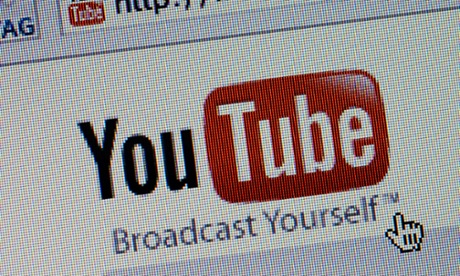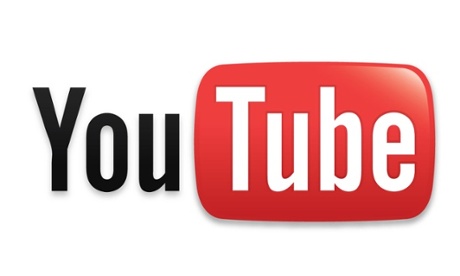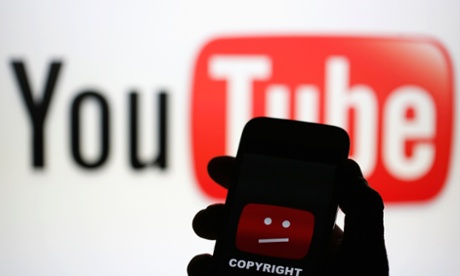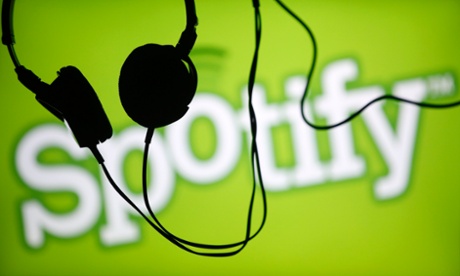Independent music labels are increasingly willing to speak out about digital music and what it means for their artists and businesses.
From complaining about YouTube’s contracts to giving their views on streaming services like Spotify, indies are ensuring that their views are heard in the main music industry debates.
Which is why a day at the Music Connected conference in London was a good chance to take the independent pulse on a number of digital issues.
Organised by trade body AIM, it brought together labels, digital distributors and industry experts to talk about streaming, social media, piracy and other topics. Here are some of the more notable discussion points.
1. Indie labels want to make the best of streaming
In 2015, some major labels are rumbling about whether Spotify should restrict or even remove its free, ad-supported streaming tier. Among the independents on stage at Music Connected, though, there was a more pragmatic consensus.
“Technology is what’s moved people away from owning and into as easy access to music as possible. You can’t fight technology, we just have to find as many ways of getting people onto that boat as possible,” said Nicolas Rizzi from distributor The Orchard, who defended the free tiers of companies like Spotify.
“Obviously the revenues are nowhere near what we see from subscription tiers, but it’s all about getting to the customer, and in many cases, the free tier is the only way of getting to that customer,” he said.
“We just have to make the best of it… It’s about getting as many people to listen as possible, as that will lead to many other aspects of spending.”
One positive point: indie labels say they are punching above their traditional weight on streaming services – their market share of streams is higher than their market share of sales.
“As indies we over-index on streaming, and within streaming we over-index on premium, because the type of music we’re releasing will appeal to early adopters,” said Gerald Youna of Beggars Group.
2. Labels are more cautious about SoundCloud
A lot of independent artists put new music up on SoundCloud, even though – unless they’re part of its recently-launched advertising program – they won’t get paid for streams of those tracks.
Why? Because they like the site and its community and see it as a way to build their audience, and/or because they appreciate the analytics they get back on where their fans are, which helps to plan touring.
It was interesting to hear notes of caution from labels at Music Connected though, who are thinking hard about the comparison between SoundCloud and services like Spotify which do pay royalties.
“If you’re a brand new band with no fans yet, and you start promoting on SoundCloud it’s going to be very hard to migrate those fans over to Spotify and the other licensed services,” said Youna.
“If you start fresh with a band, and management are ‘we just wanna be on SoundCloud because it’s cooler and it’s where our fans are’ that’s definitely not the way forward.”
Others were more positive, with caveats. Leon Grant Bussinger from Warp Records stressed that his label appreciates the role SoundCloud plays for its artists, but pointed to the importance of parity with other services.
“Immediately when we put something on SoundCloud, we put it on every other licensed streaming service too,” he said. “After a while, SoundCloud streams taper off and Spotify streams start to overtake them. And this is a good thing.”
3. YouTube still more of a help than a hindrance
Indie labels fell out with YouTube in a big way in 2014 over the terms of the contract for its YouTube Music Key service, but particularly when you talk to digital executives from labels, they still see its value.
“It’s more of a help than any kind of hindrance. We’re exposed to far more audience than we would be on any other platform. It’s the largest streaming music service in the world, so it’s obviously a help,” said Bussinger.
Rizzi noted that The Orchard has a team of more than 20 people dealing with YouTube on behalf of its label clients, so it plays an important role. But he admitted: “There is a problem there for sure: the fact that the audience on YouTube is so huge, compared to the revenues. And taking people away from other services, that is a problem”.
That referred to the concern that YouTube is possibly making a paid subscription to services like Spotify less appealing. “We just have to tread carefully and find he right balance between our efforts on YouTube and on other places.”
4. Madonna on Meerkat? That’s ‘ridiculous’
In 2015, Madonna has already popped up promoting her new album on Instagram, Snapchat, Grindr and Meerkat, in a campaign that’s trying to reach old fans and new on the social apps that they might be using.
But is she trying too hard? Perhaps unsurprisingly, a panel of indie marketing experts were unimpressed. “When Madonna goes on Meerkat it’s just ridiculous,” said consultant Angie Somerside, who was backed up by David Emery of Kobalt Label Services.
“With that case you can see the meeting: ‘Right, we want to get our demographics down. We want to get on Radio 1! Right, where are they? They’re on Snapchat. I’ve heard about this thing called ‘Meerkat’… It’s the tail wagging the dog, very much so,” he said.
Somerside said that marketers working for artists shouldn’t get sucked in to trying to make fans install the latest buzzy app in order to connect with them. “A lot of that is bad advice. It’s the behaviour that dictates what works, not the technology,” she said.
“The kids decide whether they want to be on Vine or WhatsApp. No one knew that Twitter would do what it did. The kids dictate it with their behaviour: you can’t make people do things now.”
5. Is Thom Yorke the King Cnut [sic?] of digital music?
Indie labels weren’t criticising Thom Yorke at Music Connected, but industry consultant Mark Mulligan had some thoughts on the musician’s opposition to Spotify, comparing him to King Cnut trying to beat back the rising tide of streaming.
“The tide is coming in … and if he stands there resisting, he’s going to get washed away,” said Mulligan. A bit unfair, given that with In Rainbows’ pay-what-you-like release and the BitTorrent bundle for his last solo album Tomorrow’s Modern Boxes, Yorke has done more than most artists to experiment with new forms of digital distribution.
“Things do change, they do change really quickly. The transformation can be utterly pervasive, yet we all find ways to survive if we’re willing to find ways to work with this change,” maintained Mulligan. “There are two ways you can face change: one, ‘I need to rethink the way I do everything’, and two, ‘Crap, I don’t want this to happen’.”
6. Watch out for playlist payola
Playlists are an important new currency on streaming services, from those created by fans that have picked up hundreds of thousands of followers, to the ones curated by labels, and the ones on Spotify’s homepage created by its own editorial team.
Getting songs on to popular playlists is increasingly important to labels, but there may be potential for shenanigans.
Some indie labels worry that major labels will start putting more pressure on Spotify to include more of their songs, while others note that some independent creators of popular playlists are hoping to charge money to add tracks – in the same way that some YouTube gamers have started charging developers to put their games in a video.
“We’ve been asked for money. They seem to think that they can make money from it. It seems clear to me that someone’s been paying them money, otherwise they wouldn’t be so confident that they can charge,” said Will Cooper of PIAS, during a panel on playlists. “It’s not a surprise. Clearly payola worked well in American radio, so why wouldn’t it work well on Spotify?”
Spotify’s Chris Stoneman agreed: “It’s certainly something we’ve heard is happening, people asking for money.” But he warned against it, saying that people follow a playlist “because it’s good: people aren’t going to follow a playlist that is throwing tracks in because it gets money.”
7. Indie labels should come together with their own playlist brand
Each of the three major labels has its own team creating playlists on Spotify, complete with their own consumer brands: Digster for Universal Music, Filtr for Sony Music and Topsify for Warner Music. They curate and promote these playlists, including adding songs from rivals, but also as a way to promote new tracks from their own artists.
For now, there isn’t anything comparable for the indie sector, although a number of labels run their own playlists. One idea floated during Music Connected was for someone to take on the role of creating a bigger, indie-focused playlist brand to compete with Digster, Filtr and Topsify.
“It just makes sense,” said Sammy Andrews of Cooking Vinyl. “It kind of seems mad to me that no organisation has stood up yet and said ‘let’s do this’. We’re represented with [independent record] stores, but we should be represented with playlists too.”
“There is definitely a gap in the market for an independent playlist curator, on Spotify at least,” added Spotify’s Chris Stoneman. The challenge is finding someone willing to get the backing of the industry – and then to manage the process of soliciting and choosing tracks from the huge number of independent labels.
8. Sometimes Instagram is the best way to promote music
One of the most interesting sessions at the conference came from Sarah Gasperi of label Mute, talking about the digital marketing for the last album by Liars: Mess On A Mission. Rather than Facebook or Twitter, the campaign was driven by Instagram.
“We decided to make it the centre of that campaign,” she said, pointing out that as a band, Liars are very big on communicating visually, not just through music or written content.
“We could clearly see that Facebook and Twitter were not the platforms that were fitting the band. The way they were using them was quite sparse: not always regular… Instagram was really the heart of that campaign: and the start of any engagement and interactive effort that we put together.”
That included 15-second teaser videos posted to Instagram then shared elsewhere, and a contest for fans to pose with a limited-edition 12” released for Record Store Day, as creatively as possible. “All the teasers were 15 seconds, and all the visuals were striking and unique, and posted on Instagram then spread around.”
9. Mailing lists are important – even if Radio 1 doesn’t think so
Pretty much every musician has a mailing list, but the topic is rarely the subject of excitable discussion at music industry conferences. Not because they’re inefficient ways to market music, though.
“Every time we work with clients who have large email lists, you can see that they drive a hell of a lot of sales,” said Darren Hemmings of digital marketing agency Motive Unknown, which works with bands like Drenge.
Hemmings suggested that labels sometimes put more focus on social networks and other services with public figures, so they can impress radio bosses enough to playlist their tracks.
“It drives me nuts that labels just won’t focus on it, because they will choose to focus on publicly viewable metrics so that George [Ergatoudis – head of music] and co at Radio 1 will look at this and feel this is the thing that will go on the playlist,” he said.
10. Judge Jules wants more to be done to tackle piracy
Judge Jules made his name as a DJ, before retraining as a lawyer – he now works at London firm Sheridans. He had some more caution about streaming service SoundCloud during a panel on piracy.
“SoundCloud is the great trapdoor for artists’ material appearing on torrent and illegal download sites. It’s something that needs to be treated with exceptional caution when you’re an artist and a label,” he said.
“It’s a numbers game: most of the pirates will just look at SoundCloud and scrape everything, whether it’s demos, whether it’s DJ mixes. And there’s automated software that will make that appear on these sites, and then on Google.”
He called for industry bodies like the BPI to lobby even harder for government action to help crack down on piracy sites. “The targets have to be web hosts surely. there has to be a quicker way to deal with web hosts and get a blocking order that day,” he said.
Jules also warned that if Spotify is forced to remove or restrict its freemium tier, piracy may be the beneficiary. “The more freemium there is, the less the demand for illegal downloading there will be.”











